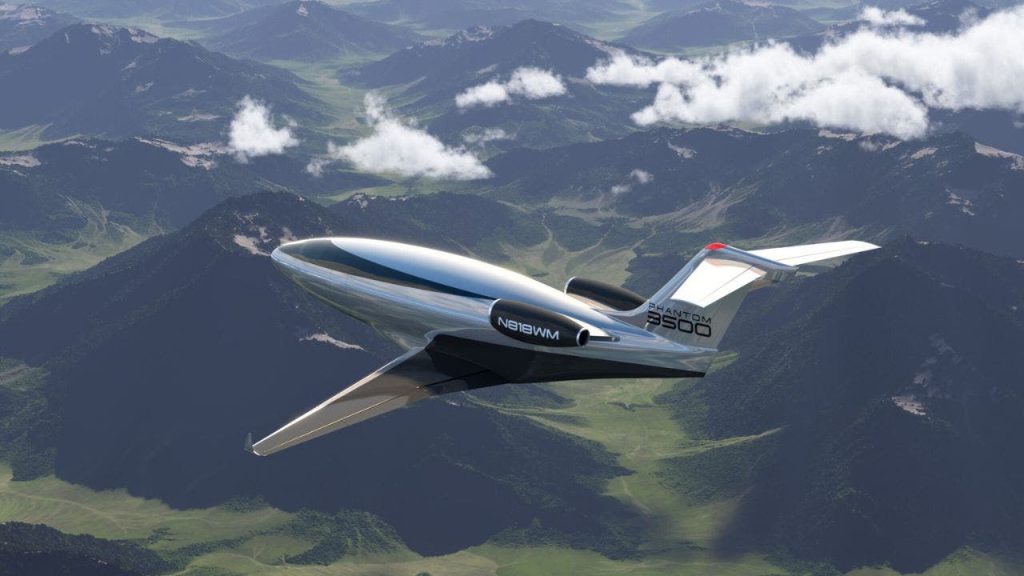Otto Aviation has introduced the Phantom 3500, a revolutionary aircraft that does away with traditional windows, proposing a radical change in air travel. This innovative design not only aims to improve fuel efficiency by reducing aerodynamic drag but also provides passengers with immersive digital experiences. Utilizing advanced technology, the Phantom 3500 promises to redefine comfort and functionality in the skies.
| Article Subheadings |
|---|
| 1) The Significance of a Windowless Design |
| 2) Offering a Stunning Digital Experience |
| 3) Enhancements in Fuel Efficiency |
| 4) The Future of Air Travel |
| 5) Key Takeaways from the Phantom 3500 |
The Significance of a Windowless Design
The concept of a windowless aircraft may seem unusual to most travelers, who often don’t realize that windows can be structural weak points on an airplane. According to experts, these windows necessitate additional reinforcement, ultimately adding weight and obstructing the smooth airflow over the fuselage, which can lead to increased drag. By eliminating windows, the Phantom 3500’s smooth surface allows air to flow with minimal turbulence. This design aims to achieve full laminar flow characteristics, a critical factor for maximizing aerodynamic performance.
Otto Aviation’s engineering team has tackled the challenges associated with traditional aircraft windows by enhancing the existing design. The decision to remove windows is not merely an aesthetic choice; it has been meticulously thought out to optimize the aircraft’s performance. Using lightweight materials and ensuring a sleek fuselage enhances the airflow, which can be crucial in reducing fuel consumption during flights.
Offering a Stunning Digital Experience
One common concern regarding windowless planes is the potential for claustrophobia among passengers. To alleviate this issue, the Phantom 3500 incorporates high-definition digital screens throughout the cabin, presenting real-time video feeds captured by exterior-mounted cameras. This technology, branded as “Super Natural Vision” by Otto Aviation, allows passengers to enjoy immersive panoramic views, giving them the sensation of flying with traditional windows despite their absence.
Inside, the spacious cabin of the Phantom 3500 measures 800 cubic feet and offers a ceiling height of 6 feet 5 inches. This layout is designed to accommodate four or more passengers comfortably while providing luxury and flexibility in design. Seating arrangements can be modified for relaxation, productivity, or entertainment—allowing passengers to optimize comfort during their journey.
Enhancements in Fuel Efficiency
The Phantom 3500 represents a significant advancement in fuel efficiency, building upon earlier models like Otto’s Celera 500L prototype. By maintaining laminar flow throughout the aircraft’s design, it is claimed to improve fuel efficiency by as much as 35%. This is a considerable achievement that allows for high-speed flight while consuming less fuel compared to conventional aircraft.
Operating effectively across the transonic range (Mach 0.8–1.2), the Phantom 3500 is capable of maintaining cruising altitudes of up to 51,000 feet—much higher than traditional commercial airliners that usually operate between 30,000 and 40,000 feet. Its streamlined design and optimized aerodynamics lead to a remarkable reduction in fuel consumption, reportedly burning 50% less fuel than competing models. These advancements pave the way for lower operational costs and significantly lower carbon emissions.
The Future of Air Travel
The innovations introduced by the Phantom 3500 may herald a new standard in aviation. With its capacity to take off from as short a runway as 3,500 feet, this aircraft may greatly expand the number of accessible airports across the United States and beyond. The transition to a windowless design could lead to a more efficient and environmentally-friendly aviation sector, significantly contributing to global sustainability goals.
The Phantom 3500 holds the potential to pave the way for an era where air travel becomes faster, comfortable, and environmentally responsible. As air travel continues to evolve, designs like these will be crucial in adapting to modern demands while decreasing the ecological footprint of flying.
Key Takeaways from the Phantom 3500
The Phantom 3500 showcases a glimpse into the future of air travel. With its groundbreaking windowless design and focus on sustainability, the aircraft is set to provide passengers with unique and immersive digital experiences. If the Phantom 3500 fulfills its promises, traditional views from airplane windows may soon be a relic of the past, and flying may evolve into an enhanced experience both for leisure and business travelers.
| No. | Key Points |
|---|---|
| 1 | The Phantom 3500 features a windowless design that enhances aerodynamic performance. |
| 2 | High-definition digital screens provide passengers with real-time exterior views. |
| 3 | The aircraft aims to improve fuel efficiency by 35%, burning 50% less fuel than conventional jets. |
| 4 | Cruising altitudes of up to 51,000 feet allow for better flight performance and efficiency. |
| 5 | The Phantom 3500 sets a precedent for future aircraft designs focused on sustainability and passenger experience. |
Summary
The introduction of the Phantom 3500 represents a significant leap forward in air travel, blending innovation with passenger comfort and environmental responsibility. As the aircraft enters the market, it may not only change the aesthetic of flying but also contribute to substantial sustainability efforts within the aviation industry. The future of air travel could very well evolve into an experience that is as much about advanced technology as it is about comfort and functionality.
Frequently Asked Questions
Question: What is the benefit of removing windows from an aircraft?
Removing windows reduces structural weak points, decreases aircraft weight, and enhances aerodynamics, leading to improved fuel efficiency.
Question: How does the Phantom 3500 provide passengers with external views?
The Phantom 3500 uses high-definition digital screens that display real-time video from exterior cameras, offering panoramic views to passengers.
Question: What makes the Phantom 3500 fuel-efficient compared to traditional jets?
The aircraft’s design maintains laminar flow, resulting in a significant reduction in drag, allowing it to burn 50% less fuel than conventional business jets.
